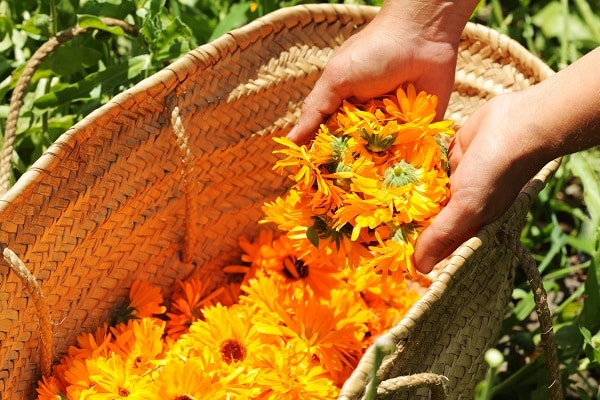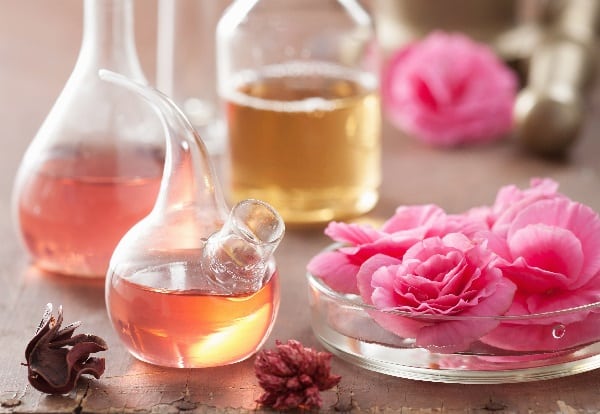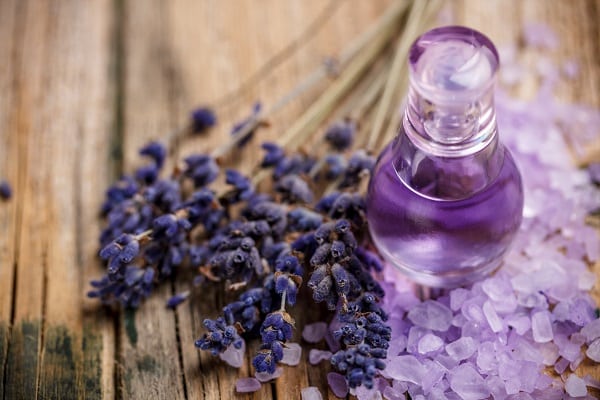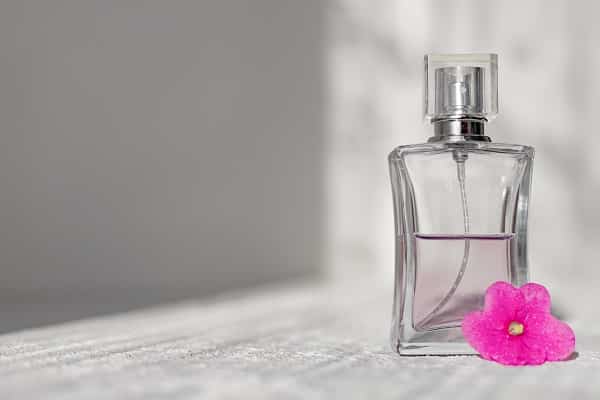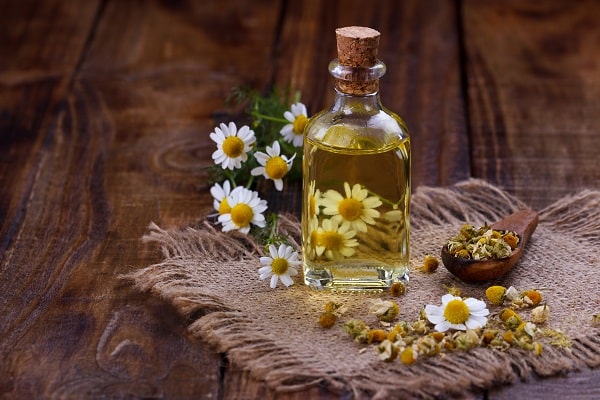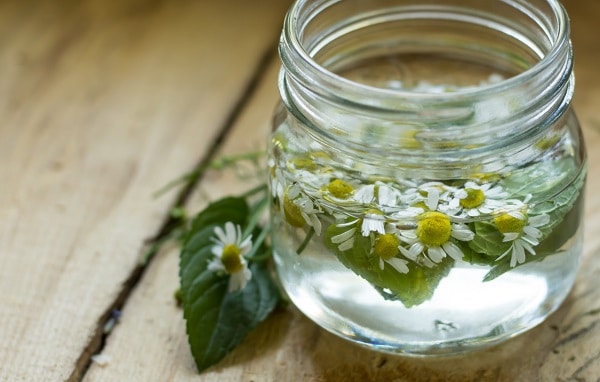Creating your own perfume from flowers is a delightful and rewarding process. It allows you to connect with nature, explore your creativity, and create a scent that is uniquely yours. Homemade perfumes are free from synthetic chemicals, making them a healthier choice for those with sensitive skin or allergies. Plus, they make for thoughtful, personalized gifts. This guide will take you through the journey of turning flowers into perfume, from understanding the basics of perfumery to the actual process of extraction and blending!
Contents
The Basics Of Perfumery
Perfumery is an art that revolves around the balance of different scents. At the heart of this balance are the three notes: top, middle, and base notes. The top note is the initial scent you perceive when you first smell a perfume. It’s usually light and evaporates quickly. The middle note, also known as the heart note, emerges as the top note fades. It’s generally more mellow and lasts longer. The base note is the final fragrance that develops and lingers the longest on the skin.
Understanding these notes is crucial in creating a well-rounded perfume. Each note plays a unique role in the perfume’s overall scent profile. The top note provides the first impression, the middle note forms the core of the blend, and the base note brings depth and solidity. When harmoniously blended, these notes create a perfume that evolves and unfolds over time, offering a multi-layered sensory experience.
Choosing The Right Flowers
Choosing the right flowers is a critical step in making your own perfume. The scent profile of the flower you choose will significantly influence the final product. For top notes, consider flowers with a fresh and invigorating scent, such as citrus blossoms or lavender. For middle notes, flowers with a more substantial, full-bodied fragrance, like roses or jasmine, are ideal. For base notes, you might want to consider flowers with a deep, rich scent, like orchids or violets.
Remember, the beauty of creating your own perfume is the freedom to experiment. Don’t be afraid to try different combinations of flowers. You might discover a blend that perfectly suits your personal taste. Also, consider the seasonality and availability of flowers. Using flowers in season can add a timely and unique touch to your perfume!
Harvesting Flowers
Harvesting flowers for perfume-making is a delicate process. The best time to harvest flowers is in the early morning, just after the dew has evaporated. This is when their scent is at its peak. Use a pair of sharp scissors or pruners to cut the flowers, being careful not to bruise them, as this can affect their scent.
Once harvested, handle the flowers gently to preserve their fragrance. Store them in a cool, dry place away from direct sunlight. If you’re not using them immediately, wrap them loosely in a damp paper towel and place them in a sealed container in the refrigerator. This will help maintain their freshness until you’re ready to start the extraction process.
Extracting The Scent
The extraction of scent from flowers is a fascinating process. There are several methods you can use, including steam distillation, solvent extraction, and enfleurage. Steam distillation involves passing steam through the flowers to vaporize the scent compounds, which are then condensed and collected. Solvent extraction uses a solvent like alcohol to dissolve the scent compounds, and the solvent is later evaporated to leave behind the pure fragrance. Enfleurage is a traditional method that involves pressing flowers into fat to absorb their scent.
Each method has its pros and cons. Steam distillation is relatively straightforward and doesn’t require any special equipment, but it may not capture the full complexity of the flower’s scent. Solvent extraction can yield a more complete scent profile, but it requires more time and resources. Enfleurage is the most labor-intensive method but can capture the most delicate and elusive scents. Choose the method that best suits your resources and the flowers you’re using.
Creating Your Perfume Blend
Once you’ve extracted the scents from your chosen flowers, it’s time to create your perfume blend. This involves mixing the extracted scents in a way that balances the top, middle, and base notes. Start with the base note, add the middle note, and finish with the top note. The typical ratio is 30% top note, 50% middle note, and 20% base note, but feel free to adjust this to your liking.
Creating a balanced perfume blend requires patience and experimentation. Don’t be discouraged if your first few attempts don’t turn out as expected. Perfumery is an art, and like any art, it takes practice to master. Keep trying different combinations until you find a blend that you love. Remember, the goal is to create a perfume that reflects your personal taste and style.
Aging The Perfume
Aging is an often-overlooked step in perfume-making, but it’s crucial for developing the perfume’s complete scent profile. During the aging process, the different notes meld together and mature, resulting in a more rounded and complex fragrance. The length of the aging process can vary depending on the type of perfume you’re making, but a general guideline is to let your perfume age for at least a month.
Store your perfume in a cool, dark place during the aging process. This helps preserve the integrity of the scent. Resist the temptation to use your perfume before it’s fully aged. While it might smell good immediately after blending, it will smell even better after it’s had time to mature.
Bottling And Storing Your Perfume
After your perfume has aged, it’s time to bottle it. Choose a bottle that’s airtight and resistant to light, as light can degrade the perfume over time. Glass bottles with a stopper or a spray mechanism are a good choice. Make sure the bottle is clean and dry before you pour in your perfume to prevent any contamination.
Proper storage can significantly extend the shelf life of your homemade perfume. Store your perfume in a cool, dark place, away from heat and light. Avoid shaking the bottle, as this can disrupt the perfume’s composition. With proper care, your homemade perfume can last for several months or even longer. Remember, natural perfumes don’t have the same preservatives as commercial ones, so they may not last as long, but their natural and unique scent makes them worth it.
Troubleshooting Common Issues
Making your own perfume can come with its own set of challenges. One common issue is a perfume that smells great initially but fades quickly. This could be due to a lack of base notes, which are responsible for the perfume’s longevity. Try adding more base notes or using fixatives like orris root or sandalwood to extend the perfume’s staying power.
Another common issue is a perfume that smells different on the skin than in the bottle. This is because your body chemistry can interact with the perfume, altering its scent. To mitigate this, test your perfume on your skin before finalizing your blend. If the scent changes in a way you don’t like, try adjusting the blend or adding different notes that work better with your skin chemistry.
Exploring Advanced Techniques
Once you’ve mastered the basics of perfume-making, you might want to explore more advanced techniques. One such technique is tincturing, where you steep flowers in alcohol to extract their scent. This can capture more subtle nuances than steam distillation or solvent extraction. Another advanced technique is layering, where you create separate perfumes for each note and layer them on your skin to create a complex, evolving fragrance.
Experimenting with different extraction methods, blending unusual scent combinations, and even growing your own perfume garden are all ways to delve deeper into the art of perfumery. Remember, the most important thing is to enjoy the process. Perfume-making is a creative journey, and every step of the way offers opportunities for discovery and self-expression!
You’re Ready To Start Turning Flowers Into Perfume!
Turning flowers into perfume is a beautiful process that combines art, science, and a touch of magic. It allows you to create a scent that is uniquely yours, capturing the essence of your favorite flowers in a bottle. Whether you’re making perfume for personal use or as a thoughtful gift, the process is as rewarding as the end product. So, gather your flowers, roll up your sleeves, and embark on your perfumery journey. With patience, creativity, and a bit of practice, you’ll be able to create a perfume that’s as unique and beautiful as a blooming flower.


